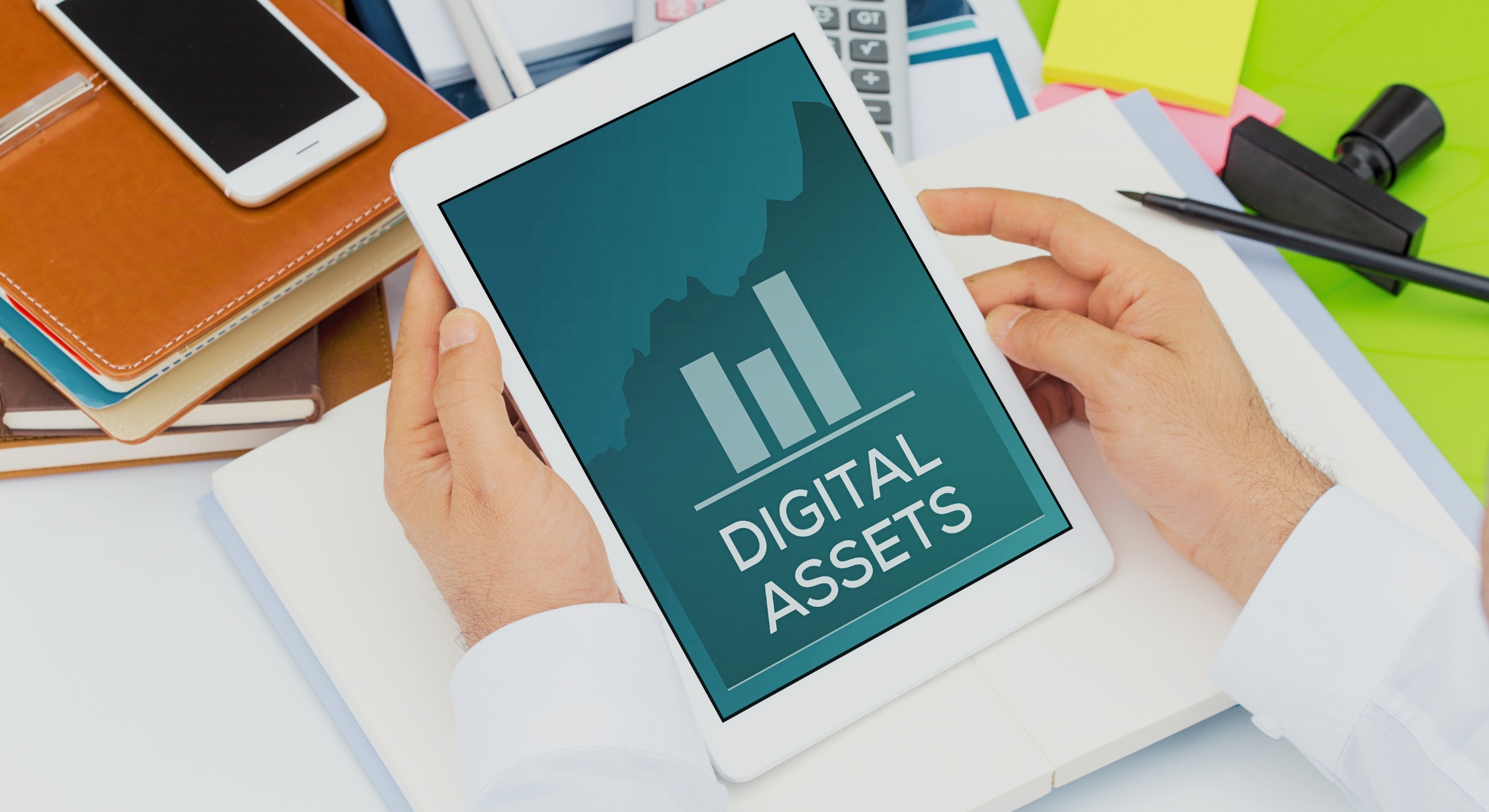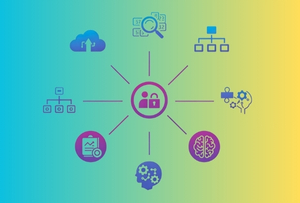Experion is where engineering precision meets business intuition. Our digital solutions simplify the complex, helping brands manage what matters most.
For businesses today, digital content is more than just a support function; it’s at the core of how brands communicate, sell, and stay relevant. With campaigns running across platforms, teams collaborating remotely, and stakeholders needing quick access to visuals and files, having a structured way to manage these assets makes all the difference.
At this point, digital asset management software becomes crucial. It brings order to the sprawl of files by offering a single system to store, organize, and retrieve them efficiently. It’s not just about saving space or finding files faster, but about ensuring that everyone is working with the right version of the right asset, every time.
More than being helpful, investing in the right digital asset management system software is strategic. It improves collaboration, protects brand integrity, and lets your teams move quicker without second-guessing if the logo they’re using is outdated or whether a file is approved for public use.
What is Digital Asset Management (DAM) Software?

Serving as a hub, digital asset management software organizes and stores files like images, videos, audio clips, and documents. But what makes it valuable isn’t just the storage. It’s the system around it, like tagging, search filters, access permissions, and version history, that makes working with digital content feel effortless.
With a well-structured DAM software in place, teams don’t have to waste time hunting for assets or redoing work. Whether it’s the best digital asset management software for a large enterprise or a more focused solution for smaller teams, the goal remains the same: to help you manage your digital assets effortlessly and use them with ease.
A good digital assets management software empowers marketing, design, sales, and operations to work in sync, pulling from one reliable source of truth instead of disconnected drives or overflowing folders.
Industries that Benefit from DAM Software

Digital asset management isn’t a one-industry tool. Its impact stretches across sectors, helping teams manage complex libraries of content while improving access, consistency, and security. Below are some key industries that gain the most from using digital asset management system software.
Marketing and Advertising
This space thrives on content. But juggling campaign visuals, video edits, ad versions, and messaging across multiple platforms is no small task.
With DAM software, marketing teams get a single space to store, update, and share assets. It becomes easier to maintain brand consistency, avoid outdated creatives, and collaborate with both internal teams and external agencies.
Example: A team preparing a product launch can manage all visuals, social media posts, website banners, and video snippets from one central location. Everyone works from the same set of approved assets, saving time and ensuring accuracy.
Retail and E-commerce
The retail world moves fast, and product content needs to keep up. From images and videos to product descriptions and promotional graphics, there’s a constant need to update, share, and synchronize content across channels.
By using digital asset management software, retailers can effectively centralize and control their assets. It ensures that product listings across the website, app, and marketplaces stay consistent and visually compelling.
Example: An online store uses digital assets management software to organize thousands of product images and videos. These assets are then instantly accessible to the marketing team and automatically pushed to the company’s website and mobile platforms.
Media and Entertainment
Media companies deal with some of the most asset-heavy operations—raw footage, edited cuts, sound files, visual effects, promotional trailers, and more. Without a system in place, managing this content becomes chaotic.
DAM software simplifies this by offering structured storage, precise tagging, and easy sharing with production teams and partners. Rights and usage permissions can also be tracked, which is crucial in this industry.
Example: A post-production team working on a documentary uses DAM to manage everything from raw interviews to B-roll footage, making collaboration smoother and edits quicker while ensuring license compliance.
Manufacturing
In this industry, clarity and version control are critical. Teams across sales, engineering, and marketing rely on accurate, up-to-date materials such as technical drawings, specs, manuals, and product imagery.
Using a digital asset management system software ensures everyone works with the correct versions, avoiding miscommunication or outdated information in client-facing documents.
Example: A manufacturer keeps their CAD files, product manuals, and brochures in a DAM system, giving sales reps instant access to updated specs when preparing for presentations.
Healthcare
When working with sensitive content—like patient images, reports, and educational materials—security and compliance take center stage. At the same time, quick access for authorized personnel is just as important.
DAM software tailored for healthcare helps meet regulatory requirements while simplifying how information is stored, accessed, and shared.
Example: A hospital uses DAM to manage patient X-rays and training videos. Medical professionals can access what they need, when they need it, without compromising data privacy.
Education
Educational institutions produce a range of assets, from recorded lectures and e-learning content to campus promotional videos and digital archives.
DAM helps organize all this content in one place, supporting faculty, students, and administrators in accessing and sharing information seamlessly.
Example: A university builds a resource library using DAM, storing everything from syllabi and classroom recordings to virtual campus tours and alumni event photos.
Non-profit Organizations
Non-profits often operate with lean teams and limited resources, but still produce and manage a variety of content—from donor campaign videos to impact stories and field photos.
Digital asset management software offers them a way to stay organized, even when working across different time zones and with a mix of staff and volunteers.
Example: A non-profit working globally uses DAM to collect and share media from field teams. This content powers their fundraising campaigns, social media outreach, and annual impact reports.
Other Industries
Beyond these, many other sectors are reaping the benefits of DAM.
- Financial services use DAM for secure handling of marketing materials and compliance documents.
- Technology companies rely on it to manage product visuals, documentation, and internal training content.
- Government agencies use DAM software to manage public information materials, policy updates, and archival documents.
- Architecture, Engineering, and Construction (AEC) teams use DAM to manage project visuals, models, and site documentation for better collaboration and client reporting.
No matter the industry, the goal remains consistent, making digital asset management less of a chore and more of a strategic advantage.
Features and Capabilities of Digital Asset Management System Software

What makes digital asset management software a vital tool isn’t just the storage—it’s the intelligence built around how digital assets are handled. A reliable digital asset management system software brings together structure, access, automation, and integration to simplify even the most complex content ecosystems.
- Centralized Storage and Organization
All digital files, whether marketing visuals, product documentation, or training videos, are stored in one secure location. This eliminates content silos and gives teams clarity. Assets can be grouped through folders, collections, or even customized categories, making navigation easier and more intuitive.
- Metadata Tagging and Searchability
The real strength of a DAM system lies in its ability to locate content swiftly. With detailed metadata like, descriptions, keywords, licensing info, dates—search becomes far more powerful than a standard file system. You don’t have to remember the exact file name, just what the asset relates to or when it was last used.
- Version Control and Access Permissions
With multiple teams working on campaigns or product lines, version confusion is a common challenge. DAM software solves this by keeping track of every version of an asset and clearly showing the latest approved one. At the same time, access can be fine-tuned, so only the right people can edit, download, or share files.
- Integration with Other Enterprise Systems
A digital assets management software becomes even more valuable when it connects with the rest of your digital ecosystem. Integration with CMS, CRM, PIM, and marketing automation tools means content flows seamlessly where it’s needed, whether that’s the website, email campaigns, or customer portals.
- AI-powered Asset Recognition and Automation
Modern DAM tools take things further with AI. They can recognize content in images or videos, suggest relevant tags, and even detect faces or branded elements. Automation features also allow teams to resize images, convert formats, or distribute assets across channels without manual effort.
Benefits of Using Digital Assets Management Software
Adopting a DAM system isn’t just about organization—it changes how teams work, collaborate, and scale.
Improved Workflow Efficiency and Collaboration
When people can find what they need in seconds, the creative process becomes smoother. Teams spend less time digging through folders or requesting files and more time producing high-value work. Built-in sharing tools also make collaboration across departments or with external partners seamless.
Secure and Scalable Storage
DAM software is built to protect valuable content. User roles, encryption, and audit trails help maintain security, while cloud-based systems can scale effortlessly as your asset library grows.
Enhanced Brand Consistency and Compliance
By guiding users to the most recent and approved content, DAM ensures that your brand always shows up as intended. It also keeps tabs on usage rights, making it easier to stay compliant with licenses and regulatory standards.
Cost and Time Savings in Content Production
Reusing existing content becomes easy when everything is tagged, searchable, and accessible. Instead of recreating a visual from scratch, teams can pull up the original and adapt it. That reduces production costs and accelerates delivery timelines.
Choosing the Best Digital Asset Management Software

Selecting the right digital asset management software is not a one-size-fits-all decision. It calls for a close look at your current workflows, your team’s needs, and how you expect your digital presence to evolve. The right platform can bring measurable improvements in productivity, content governance, and operational efficiency.
Key Factors to Consider
Scalability
Your digital library is going to grow, and so will your team’s dependency on fast and reliable access to content. A future-proof DAM system should scale effortlessly without slowing down or needing major infrastructure changes.
Customization
Every organization works a little differently. From user roles to metadata structures and branding standards, the software you choose should offer enough flexibility to mold itself around your operations—not the other way around.
Ease of Use
A good interface shouldn’t need a manual. Whether it’s your marketing lead or a content intern, the platform should be intuitive. Look for tools like drag-and-drop uploads, clean navigation, and smart filters that simplify the user experience.
Integration Capabilities
The best digital asset management software is one that fits in—not stands apart. It should work seamlessly with your CMS, CRM, PIM, and other marketing tools. A well-integrated DAM streamlines content workflows from creation to delivery.
Security and Compliance
Digital assets are business-critical. The DAM software must offer strong security measures like user-level access, encryption, and audit trails. If your sector is bound by regulations like HIPAA or GDPR, ensure compliance features are built-in.
Performance and Reliability
Rapid response, low downtime, and swift retrievals are essential. As your content library expands, performance should not suffer. Check the vendor’s infrastructure, reliability, and service commitments.
Support and Training
Even the most intuitive systems require onboarding. Look for vendors that offer quality documentation, ongoing support, and onboarding materials. Good training tools can make adoption smooth and cut down long-term issues.
As digital experiences become more connected, Experion’s systems make sure they stay coherent. From integration to automation, our technology brings your ecosystem together.
Cloud-based vs. On-Premise Solutions
Choosing between cloud and on-premise deployment impacts cost, control, and flexibility. Each option has its benefits, and the right choice depends on your specific needs
Cloud-based DAM
Pros
- Lower initial costs through subscription models
- Easily scalable to accommodate more users or storage
- Accessible from anywhere, ideal for remote teams
- Maintenance, updates, and security handled by the vendor
- Faster deployment timelines
Cons
- Recurring subscription fees over time
- Concerns over storing sensitive content on external servers
- Potential difficulty switching vendors later
- Dependency on internet availability
- May offer fewer deep customizations
On-Premise DAM
Pros
- Complete control over your data and its security
- Extensive customization possible across all layers
- One-time software licensing instead of ongoing payments
- Doesn’t rely on internet access within internal networks
Cons
- Requires significant upfront investment in infrastructure
- Maintenance and upgrades handled by your internal IT team
- Scaling can mean hardware replacements and higher costs
- Limited remote access unless configured carefully
The choice depends on your organization’s technical readiness, budget structure, need for custom features, and comfort level with external data hosting.
Pricing Models and Budget Considerations
Just like the deployment model, pricing varies based on the vendor and the structure of the software package. Understanding these models helps you weigh cost against value more accurately.
Subscription-based pricing
Common with cloud systems, where you pay monthly or annually based on the number of users, storage used, or features required.
Per-user pricing
Suited to teams with specific roles needing access. It works well for small teams but may escalate quickly with scaling.
Storage-based pricing
Your payment is determined by the size of your asset library. A good choice if your team is small but handles a large number of media files.
Feature-based pricing
Different feature tiers are available at varying prices. This allows you to scale functionality as your needs evolve.
One-time license with maintenance
Mostly seen in on-premise models, where a larger initial cost is followed by annual fees for updates and support.
When budgeting, look beyond the software fee. Consider training costs, implementation time, support subscriptions, and data migration. It’s also helpful to assess the total cost of ownership over a few years, not just the first billing cycle.
Implementation and Best Practices for Digital Asset Management
Adopting a digital asset management system isn’t just about installing software. It’s a strategic move that reshapes how teams interact with content, collaborate across departments, and maintain brand quality. A thoughtful rollout and ongoing optimization ensure that your DAM software becomes a trusted, everyday tool.
Steps for Successful DAM Adoption
Define Goals and Requirements
Identify the challenges you need to overcome first. Are teams wasting time hunting for files? Are outdated assets still in circulation? Talk to different departments to gather their expectations and challenges around content management, organization, and access.
Plan Your Metadata Strategy
Metadata is the backbone of asset discovery. Set up consistent tagging rules based on your asset types, project needs, and how users typically search. A well-thought-out taxonomy and vocabulary make retrieval faster and more accurate.
Data Migration and Cleansing
Moving your existing files into the DAM system is more than a copy-paste job. It’s a chance to clean things up—delete outdated files, tag everything properly, and bring in only what’s useful.
Configure Roles and Permissions
Every user doesn’t need access to every file. Set clear roles so people only see what’s relevant to them. This ensures security without overcrowding the interface.
Integrate with Existing Systems
To make the most of your DAM, connect it with your CMS, CRM, marketing tools, or file-sharing platforms. Smooth integrations help assets flow naturally across your ecosystem.
Develop Workflows
Define how content flows, from its creation to review, approval, and eventual distribution. Set up automation where possible, so processes stay consistent and efficient.
Pilot Testing and Feedback
Before you launch company-wide, run a test phase. Invite a few users, observe how they interact with the system, and adjust as needed.
Communicate and Launch
Share the what, why, and how of the new system with all users. Roll it out in stages if needed, and emphasize how it makes daily tasks easier.
Training and Onboarding Teams
The success of your DAM system relies greatly on proper training. Even the best digital asset management software can fall short if users aren’t confident using it.
- Create simple training guides, walkthroughs, and short videos for different roles.
- Run live sessions tailored to departments like marketing, design, or sales.
- Set up ongoing support channels—a helpdesk, Slack channel, or an internal DAM admin they can reach out to.
- Encourage peer learning through internal forums or best-practice roundups.
- Ensure that everyone stays informed about new features and process updates.
- Monitor engagement and gather feedback regularly to improve onboarding and usability.
Maintaining and Optimizing the DAM System
Once your DAM is up and running, the real work is in keeping it useful. A good system evolves with your organization.
- Conduct routine audits of the library to eliminate unused files and resolve metadata inconsistencies.
- Monitor performance—make sure searches stay quick, storage is efficient, and access works smoothly.
- Keep the software updated to stay secure and take advantage of new features.
- Refine workflows as your content strategy changes or new teams come on board.
- Stay curious—explore new vendor releases and see how they can help you work smarter.
- Listen to users—feedback loops keep the system aligned with real-world needs.
- Plan for growth—more content means more space, better tagging, and smarter search tools.
Future Trends in Digital Asset Management Software
 As business needs and technologies shift, DAM software evolves accordingly. Here are some directions where things are heading.
As business needs and technologies shift, DAM software evolves accordingly. Here are some directions where things are heading.
AI and Machine Learning
Artificial Intelligence is reshaping how assets are organized, discovered, and used.
- Auto-tagging will become more accurate, using visual and text analysis to apply metadata instantly.
- Smarter search will understand intent and context, not just keywords.
- Predictive analytics may suggest what assets to create or reuse based on usage trends.
- Automated workflows will handle approvals, formatting, or distribution with minimal human input.
- Content suggestions will help users discover useful files related to their current tasks.
Blockchain for Digital Rights Management
Blockchain could improve how rights and ownership are tracked and managed.
- Secure tracking of licenses and usage through a transparent, tamper-proof ledger.
- Smart contracts that automate license enforcement and royalty payments.
- Provenance records showing where each asset originated and how it has been used.
- Decentralized control that empowers creators and partners while maintaining oversight.
Conclusion
Digital Asset Management software is no longer a nice-to-have—it’s a foundational tool for businesses managing a growing volume of digital content. From organizing thousands of images and documents to ensuring the right teams have access to the right files at the right time, DAM brings structure, clarity, and efficiency to everyday workflows.
Key Takeaways
- DAM software provides a centralized system for storing, organizing, and retrieving digital assets, reducing content chaos across teams and departments.
- It offers indispensable features, including metadata tagging, version control, permissions management, and smooth integration with existing tools
- Industries ranging from retail and healthcare to education and media can benefit by using DAM to maintain brand consistency, improve collaboration, and scale content management.
- The decision to choose a DAM solution depends on factors including scalability, ease of use, integration options, and budget constraints.
- Effective implementation, including clear workflows, training, and long-term optimization, is key to success.
- The future of DAM is driven by AI, blockchain, and immersive content, making it increasingly intelligent, secure, and adaptable.
How Businesses Can Benefit from DAM Software
With the right digital asset management system software in place, businesses can expect more than just smoother file handling. They gain a platform that supports collaboration, speeds up content production, enforces brand guidelines, and adapts to future demands. Whether it’s a creative agency managing global campaigns or a healthcare provider safeguarding sensitive data, DAM software ensures digital content is always an asset, never a burden.
Innovation doesn’t end with implementation; it evolves with every interaction. Experion stays with you, ensuring your digital systems grow as your ambitions do.

